Have you ever looked at the menu for your favorite sushi place and seen tobiko?
Tobiko is the tiny delicious pearls on different rolls mixed into various condiments that you may have seen on other plates.
Most Americans might not know what tobiko is, but it is a delicious addition to any plate of sushi. Not only that, but it is a bright, vivid, and attention-grabbing garnish.
Flying fish roe is a popular topping for different kinds of sushi. It is a little bit sweeter than other types of caviar and is an excellent addition to different sushi rolls.
Tobiko is most prevalent in Japanese cuisine outside of sushi and is growing in popularity worldwide.
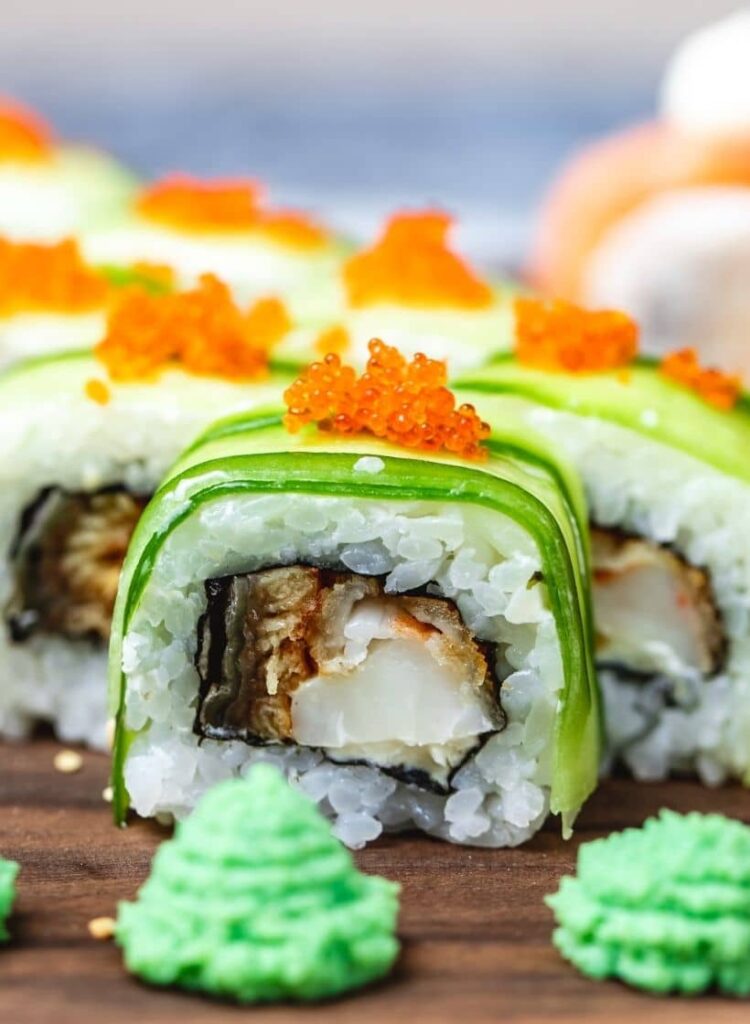
There is a lot to talk about when bringing up tobiko. There are a lot of different types and ways to prepare it. It is also pretty expensive, so what is someone supposed to do when storing it? It can also be hard to see the other uses for this delicacy.
Let’s go through what tobiko sushi is, the different kinds of tobiko and their uses, how to prepare and store tobiko, and then wrap up with a great recipe you can try at home! Let’s dive right in!
What is Tobiko and Tobiko Sushi?
Tobiko is flying fish roe and is a common ingredient in sushi. It naturally comes in a bright red-orange color and can also be colored for different aesthetics or flavors, such as with wasabi added.
Fish roe is also known as caviar and is a very delicious choice for any occasion. However, some roe and caviar are best suited for different dishes.
Tobiko is perfect for sushi and other East Asian dishes, and that is where you will see it most often. It has a different flavor and texture than other caviar.
Tobiko sushi falls into several categories. Some of them use tobiko as a garnish, and others make tobiko the star of the plate. Tobiko is a popular topping for sushi and adds a dash of color and a lovely flavor.
Not only is it a great topping, but it is often put into the sushi itself, in both the rice and the center of different rolls. You might see it in the external rice for a California roll or in the center of a hand roll.
Tobiko vs. Masago: What’s the Difference?
Tobiko is flying fish roe, while masago is a type of smelt roe. Masago is harvested from capelin fish. This little fish is close to the size of a sardine, so the eggs are pretty small.
Not only is there a pronounced difference in flavor, but there are also color and size differences. A sharp palette and a keen eye are all you need to tell the difference.
Here are the quickest ways to know which is which:
- The size.
- The color.
- The texture.
These are markedly different from each other, and you can immediately tell which one is which.
Masago is typically smaller than tobiko, and you can usually tell the difference by looking at the roe. There is no question that tobiko is larger, and this one of the reasons is why it is more expensive.
Not only that, but masago typically has an almost washed-out version of the same color, sometimes even a pale yellow. Tobiko is vivid, vibrant, and instantly recognizable. Masago usually needs to be mixed with other ingredients to get brighter, which can significantly affect its color.
There is also a different texture. Masago is typically juicier and less crunchy than tobiko. This is the most effective way to identify which one you’re eating.
Sometimes, companies will try to pass tobiko off as masago and vice versa. This is because they both look similar, and masago is typically cheaper. Successfully passing off masago as tobiko will increase your profits and mislead customers.
It is vital to vet the tobiko you’re purchasing to make sure you aren’t buying a dupe of the real thing. Since tobiko can be very expensive, you need to know that your money is well-spent. Just like with saffron, it’s best to test before you commit to the whole thing.
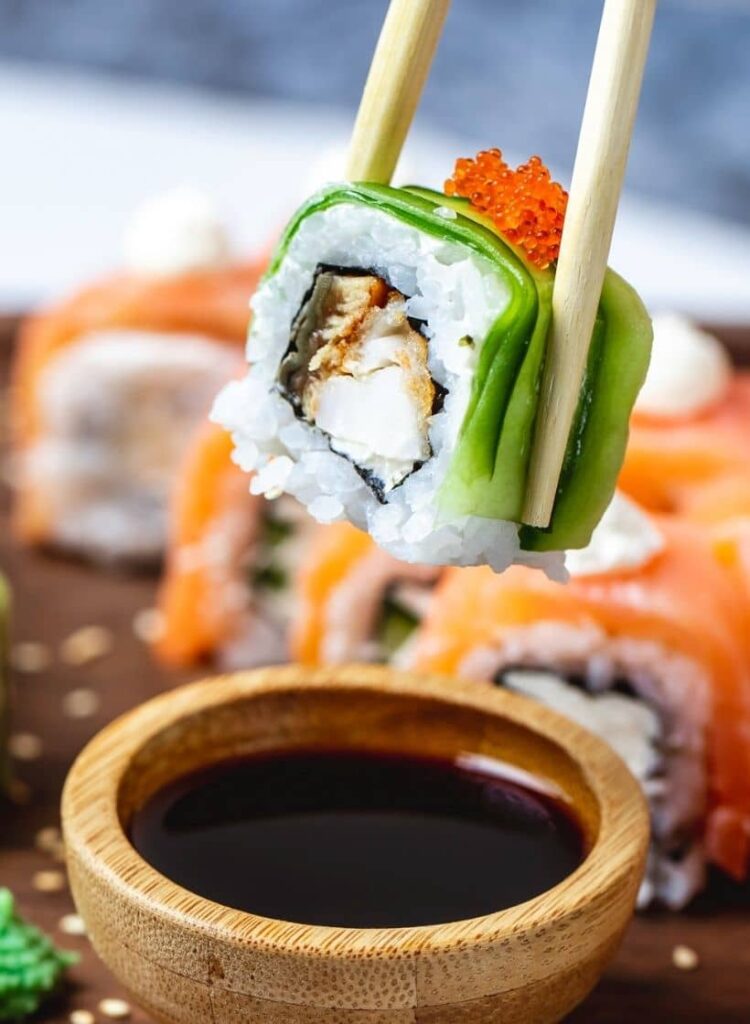
Different Types of Tobiko and Different Colors
There are all different types of tobiko out there to enjoy. There are three common varieties: red, black, and green. You might run into a few other types, but they are less common and take more time to make.
Since tobiko absorbs color so well, many chefs will use it to create truly unique presentations. Let’s take a look at the most common colors you’ll see!
Red Tobiko:
Red tobiko is the typical form of tobiko that you’ll see in the stores and has not been modified in any way. It will have a slightly salty taste, be relatively small, and have a solid red-orange color. You might even think that it has been artificially colored!
Some chefs may lean more into the red and dye their tobiko with beetroot juice. This gives the roe a rich magenta-red color and makes them pop.
Black Tobiko:
Black tobiko is a bit different from other types of tobiko. It is typically colored with squid ink and can have a little bit of squid ink flavor on top of the other incredible flavors.
Black tobiko is perfect for sleek and simply presented sushi and dishes. It is a hint of darkness on the plate.
Green Tobiko:
Green tobiko is commonly made when wasabi is mixed with the fish roe. This creates a very different flavor and can give you a spicy kick to your tobiko.
There are typically two different types of green tobiko you’ll see in stores. One is a vivid green, and the other is a muted green. These are both flavored with wasabi, but the muted greens are typically more natural.
Check Also How?
- Long to Cook a Hot Pocket in Microwave?
- Cook Frozen Shrimp?
- Make Frosting Without Powdered Sugar?
- Reheat Crab Legs?
- Cook Bratwurst in the Oven?
- Long Does It Take to Boil Potatoes?
What Does Tobiko Taste Like?
Tobiko tastes a little bit sweeter than most types of caviar. It is still salty and smokey like other types, but the subtle sweetness comes through.
The only times that tobiko tastes different from this is when it has been flavored or mixed with other ingredients. These could be wasabi or squid ink, as we discussed earlier.
Tobiko has a slightly crunchy texture and should be served quickly for the best texture and flavor. You can put it on top of sushi, pasta, dips, and salads! This is the perfect way to add a new color to great dishes and start conversations with your guests.
Is Tobiko Healthy to Eat?
Tobiko is packed with protein, healthy fats, and all kinds of great nutrients. It is pretty healthy to eat and is an excellent addition to any diet.
Tobiko’s Nutritional Value:
Tobiko is nutrient-rich and low-calorie. Specifically, they are full of Vitamin B12, riboflavin, and phosphorus. All of these are necessary to keep a human body running at top speed, and they are all packed into these delicious little morsels.
A one-ounce serving of tobiko has about six grams of protein in it, too, making it a very protein-dense part of a diet.
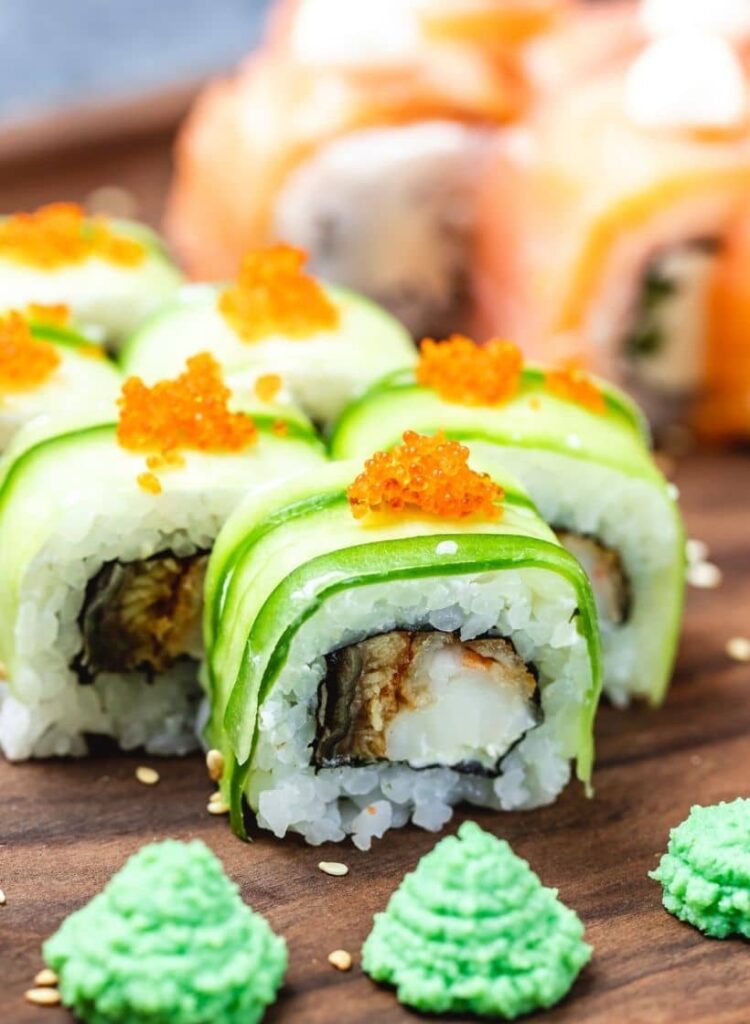
Where to Buy Tobiko
You can buy tobiko from markets that sell different types of caviar or Japanese markets. You might also find tobiko at other Asian markets since it is a relatively common sushi ingredient.
Also, you could special order tobiko if you want a specific variety or a brand. However, this can be very expensive and take longer than expected. You also need to ensure a fully refrigerated or cooled delivery process.
Something essential to consider is that tobiko is much more expensive than masago, but they are very similar. It is worth it to invest in high-quality tobiko, especially if you know you’re going to use it all up before it goes bad.
How to Make Tobiko Sushi
Tobiko sushi is so delicious, and naturally, you’ll want to make it at home! It can be straightforward and spice up all your different dishes.
Most commonly, tobiko is used as a decoration or garnish for different sushi rolls. For example, tobiko can be used in the rice around a California roll or on top of a hand roll for a pop of color.
The easiest way to make tobiko sushi is to use it this way. You could mix the tobiko with some mayonnaise and carefully spread it over the roll or mix it into the rice before making the final roll. You could carefully scoop the roe onto the roll and present the dish.
Another easy way would be to make a tobiko roll. These are simple rolls with seasoned sushi rice, tobiko, and wrapped in nori.
These give you the full flavor of the roe and let them hold the spotlight. However, this is a delicate process since you can’t press the sushi too hard without crushing the roe.
The most important thing about making tobiko sushi is that it should be served quickly. The eggs will lose their ideal texture the longer they sit out, making them relatively unpleasant to eat.
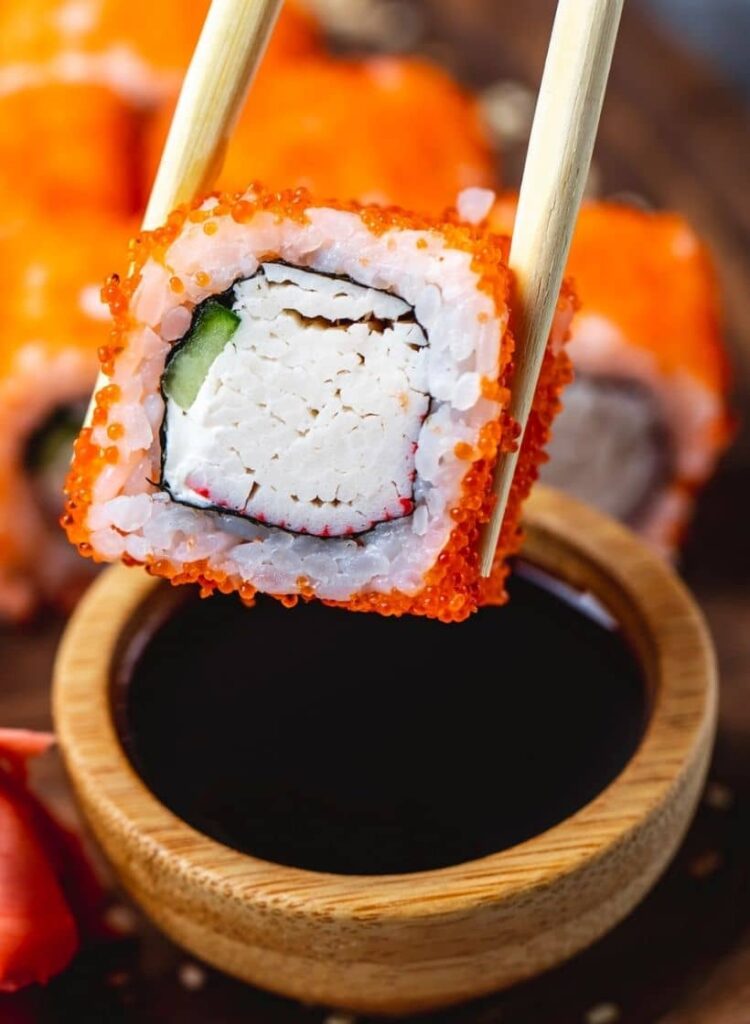
How to Store Leftover Tobiko
Tobiko is so easy to store. Not only is it easy to keep when unopened, but it is also great when it is opened. Carefully preserving the roe will let you enjoy this delicacy for longer than just one day.
Storing Tobiko In the Fridge
If a can of tobiko is unopened, you can store it in your fridge for upwards of two weeks, depending on the expiration date. Under the right conditions, it could last for a little as ten days to upwards of three weeks.
Place the sealed container in the fridge and keep cold. There’s not much more than that.
Storing tobiko in the fridge after it has been opened is slightly different. You can’t keep it as long, and storage is not as simple. You need to place your leftover tobiko into an airtight container and store it in the fridge as soon as possible.
Storing Tobiko In the Freezer
You can store tobiko in the freezer for up to three months. Once you’re ready to use your tobiko, you can scoop the desired amount out of your container and let it thaw. Once the tobiko has fully thawed, you can use it.
You can use this method to keep the tobiko you’ve already opened for longer. However, once you thaw the tobiko, you cannot refreeze it. This will ruin the quality and make it disintegrate on the plate.
The best thing to do is to scoop out enough tobiko for your purposes and then let that smaller amount thaw. The rest stays in the freezer, and you can use it later.
Final Thoughts
Tobiko is a delicious topping and ingredient for dynamic sushi. Not only does it give a pop of color, but it also has a unique flavor that will brighten up any dish. You can find it or make it any color you desire, and tobiko is packed with many great nutrients.
Picking up tobiko is never a wrong decision, but you need to review the brand carefully, and what you are buying so you don’t get scammed.
Have you ever looked at the menu for your favorite sushi place and seen tobiko?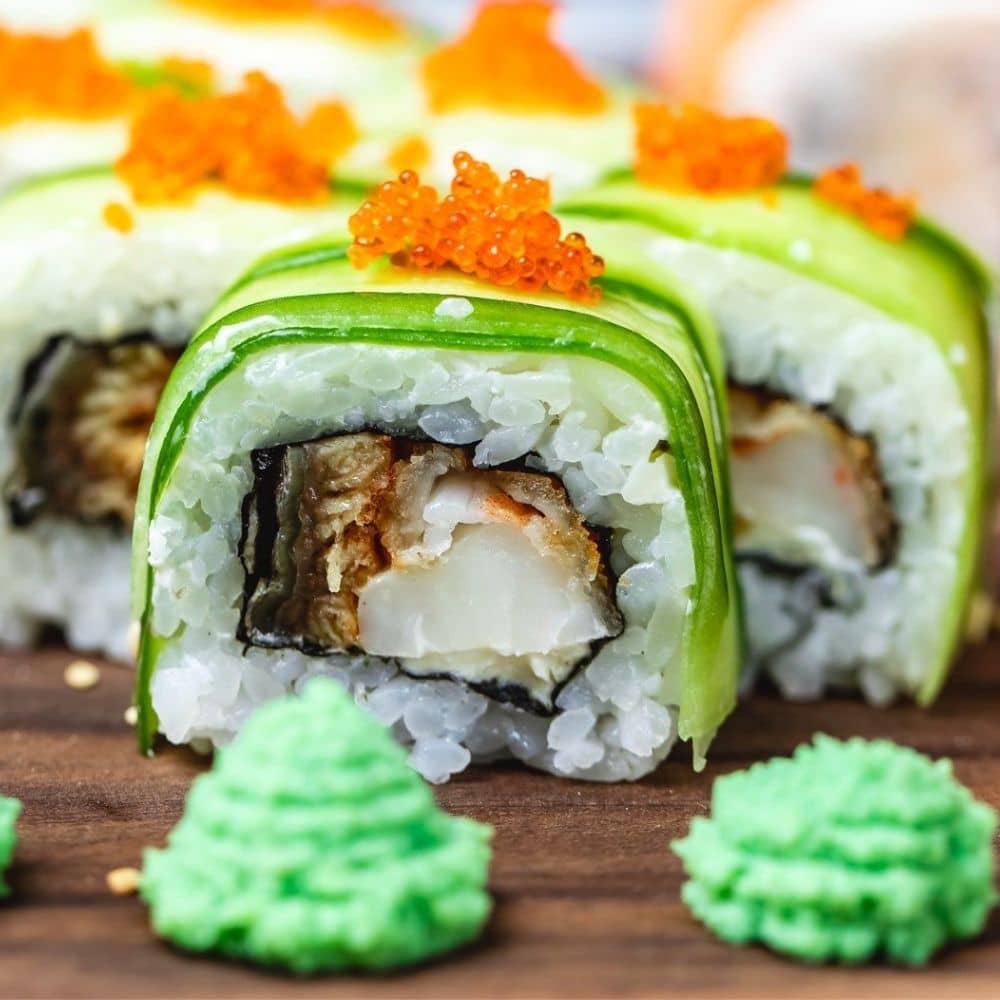
What is Tobiko and Tobiko Sushi?
Ingredients
Instructions





